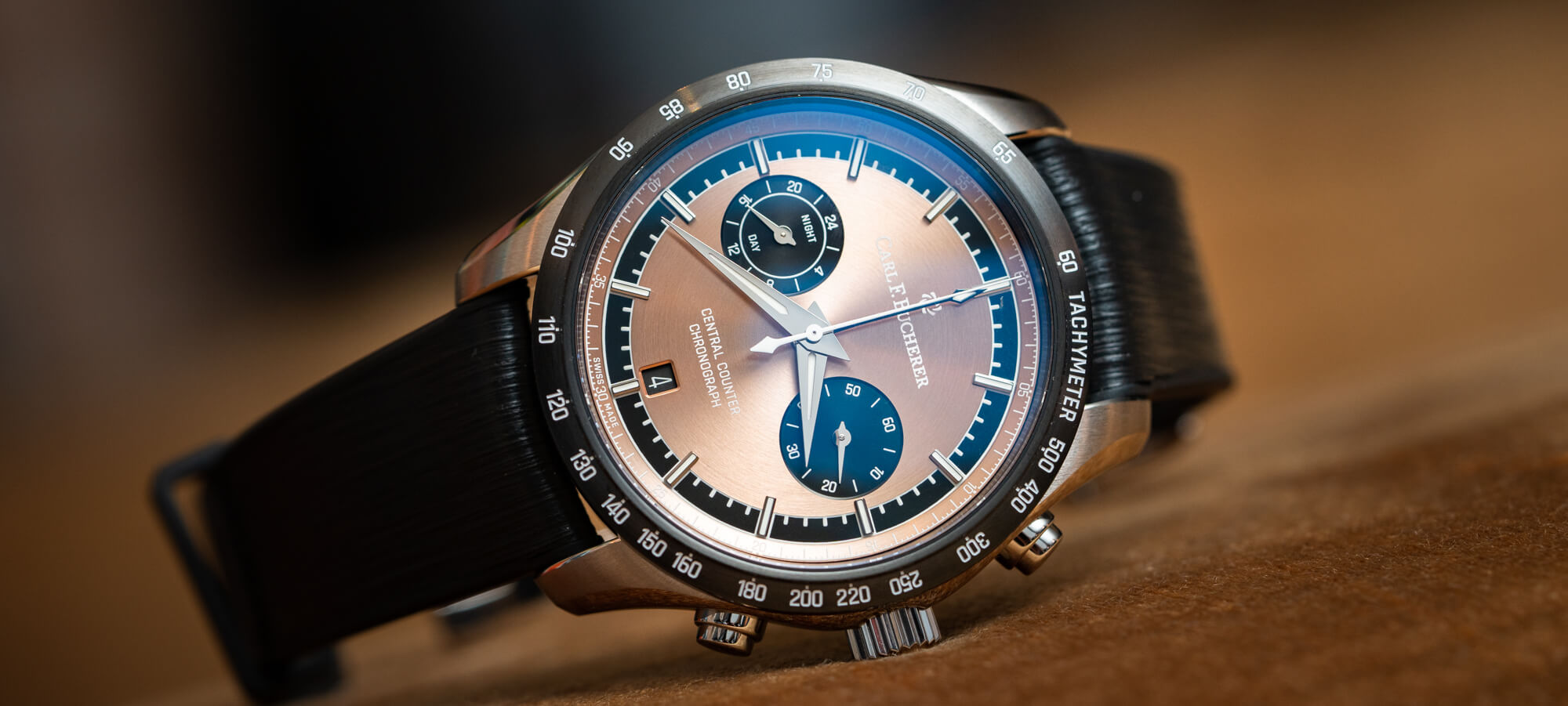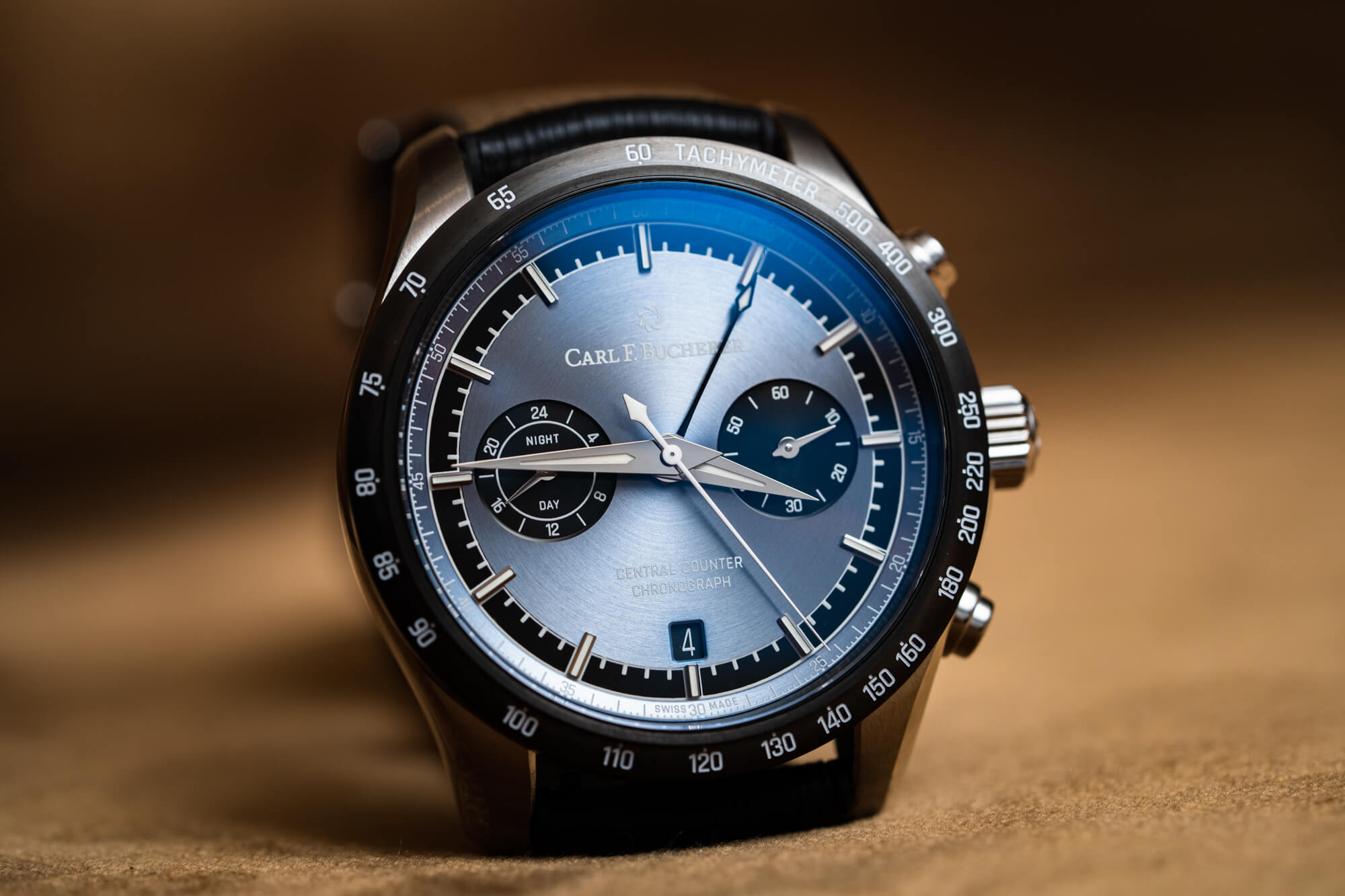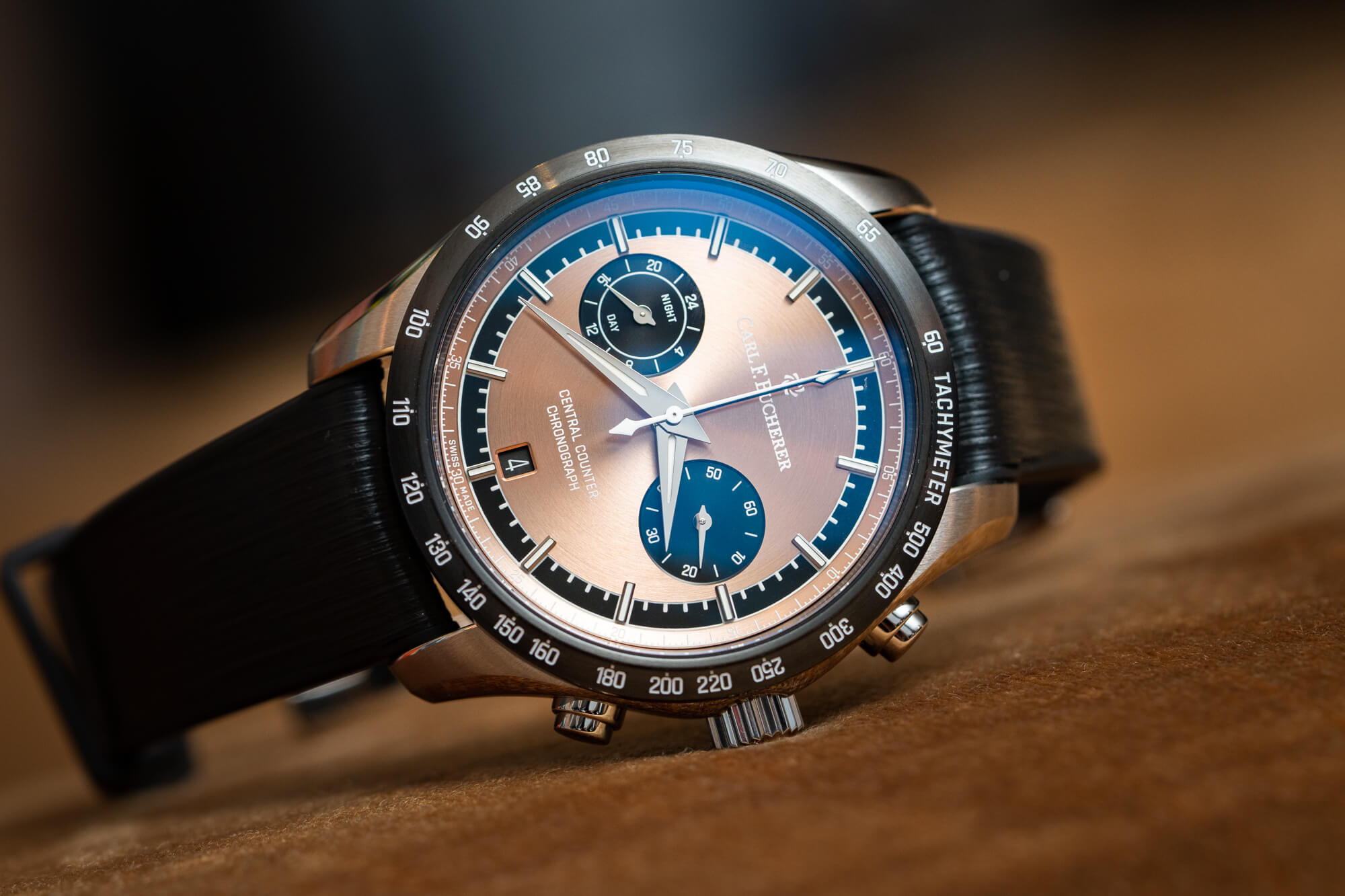As Carl F. Bucherer embarks on a new era of sorts, it appears to be trying to introduce some edgier, more modern pieces to its lineup. Just a few years ago, you likely would’ve been surprised to find a watch like this from CFB, a brand that had two cases: chunky Patravi and elegant everything else. First introduced as a 188-piece limited-edition soccer timer, the new Carl F. Bucherer Manero Central Counter chronograph collection puts a contemporary spin on both the Manero line and the Carl F. Bucherer brand. At an event in New York City’s Soho neighborhood, I got a chance to try them out firsthand.
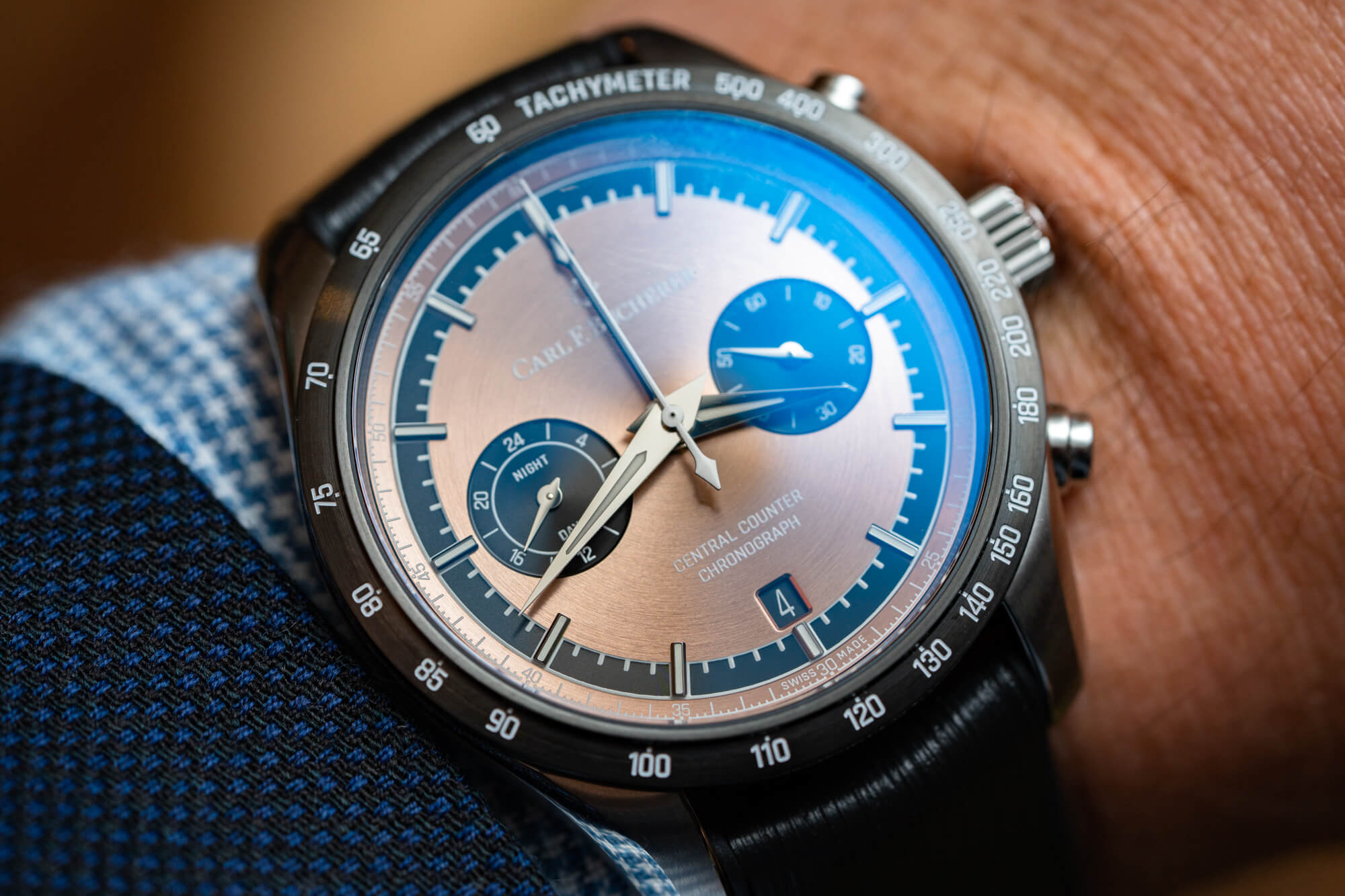
I think this is an objectively beautiful watch. And I am ready to defend that against those who disagree. While Carl F. Bucherer may not do an incredible job of marketing its watches or demonstrating its value in photos or spec sheets, handling them is a clarifying experience that begets that nice, warm “now I get it!” feeling. Sometimes, that’s not enough to overcome one’s dislike for a design, but I don’t think that would be the case here. The 42.5mm watches are 14.43mm thick, not outside the realm of reason for an automatic chronograph, and well within reason for a 42.5mm watch. The wear on the wrist is even, proportional, and impressive. The polished chamfer that runs from lug to lug and contrasts the crisp brushing on the rest of the case, in addition to the less common button-style pushers and ample crown, all make the main case a visual pleasure.
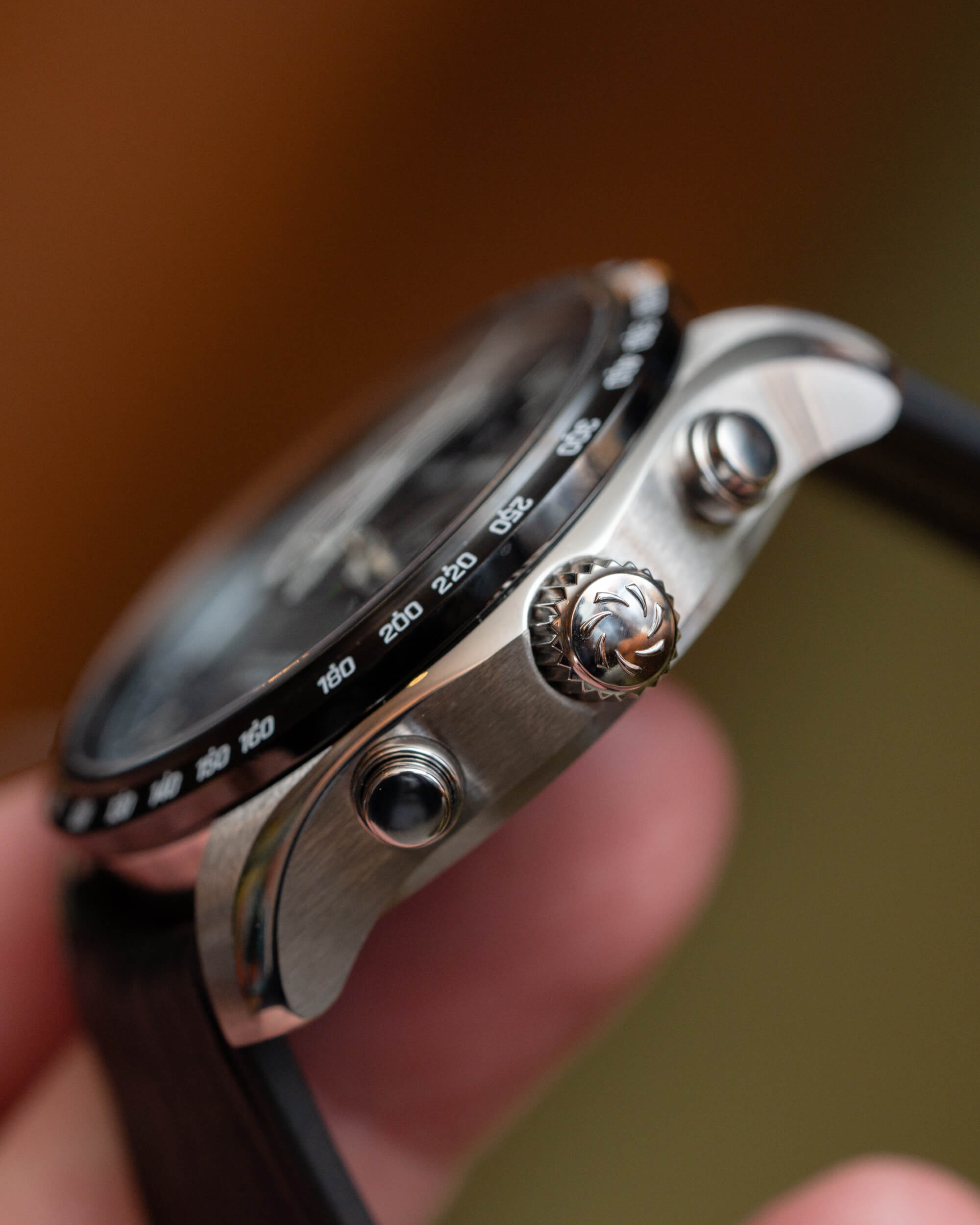
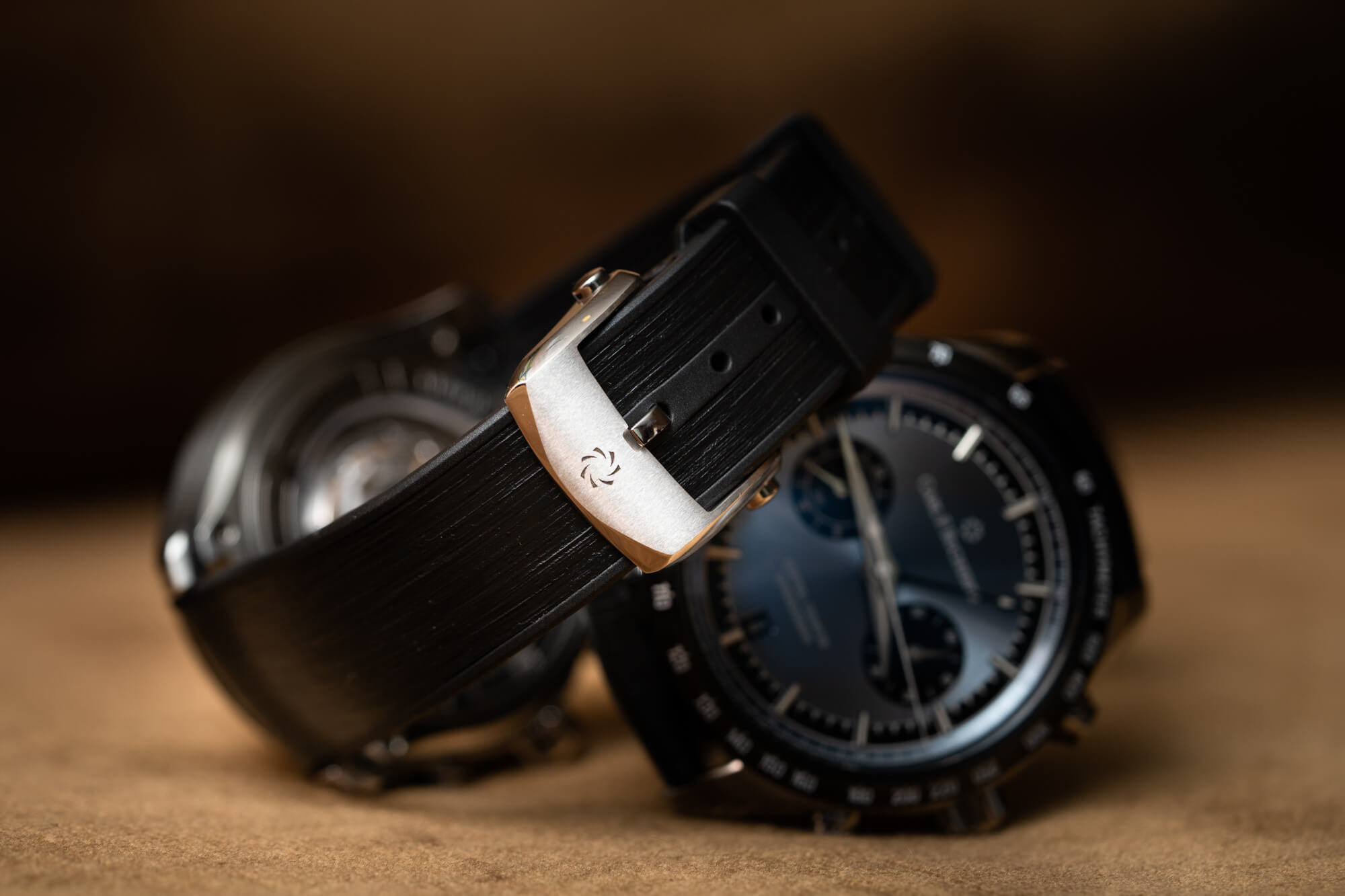
The thin, black DLC bezel hits on the current trend in chronographs and features white printing. We’ve seen a lot of these lately, and I don’t think that’s a bad thing. The market is clearly bearing the load and willing to consider them as they come, so why not keep them coming. I think the Manero Central Counter Chronograph does a great job of capitalizing on the trend without being just another example of the trend — it’s doing its own thing. The case gets a meager 30m water resistance, and that’s one of the very few downsides of the watch. I’m not very particular about water resistance, but a watch this sporty should at least get 50m (if not 100m like most similar offerings from competitors). The straps are excellent: rubber with a brushed pattern that gives them more life than your standard rubber strap, and they’re equipped with a quick-release tab and a very secure pin-buckle folding clasp.
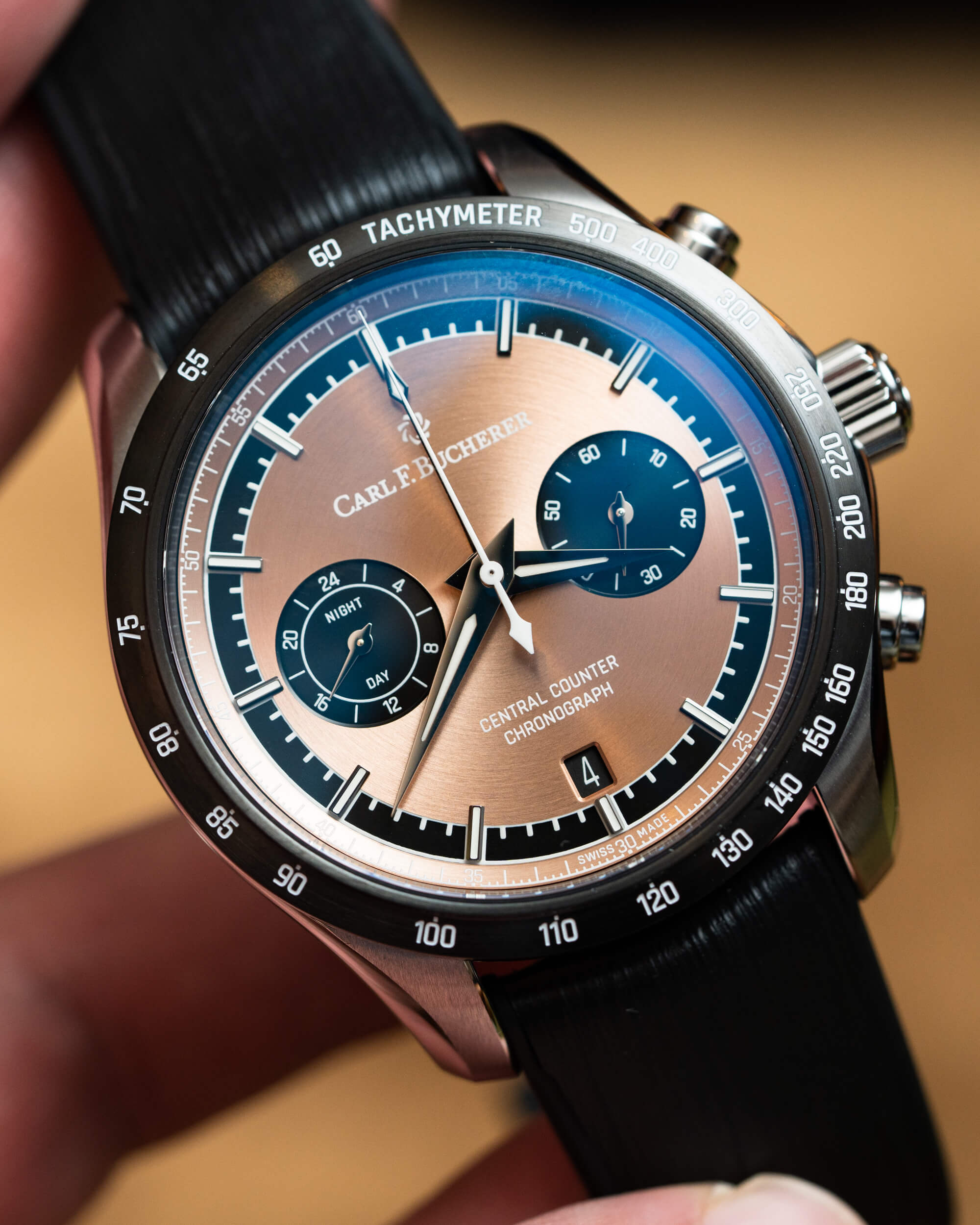
There’s almost a tuxedo vibe to the dial with the alternating black sections. The color sections are circular brushed while the sunken black sections are subtly grooved with white printing. The overall effect is balanced and brilliant. The watch is available in salmon, blue, green, and brown, all metallic and circular brushed, as seen here. The applied indices are black, which makes them appear as a bridge between color segments, while the dauphine hands are all polished, with the main handset getting lume. (I didn’t get to test out the lume, but my expectations are always low for any but the biggest brands.) You’ll note two extra hands, both set at 12. The white is the chronograph seconds, and the black underneath is the chronograph minutes, hence the model name. Watching them both tick around is a somewhat novel experience, so accustomed am I to traditional chronograph displays, but after a few semi-spontaneous uses, I found it more intuitive to look at the centrally mounted readout than multiple dials. It’s the same reason no one owns a regulator watch — they’re much harder to read.
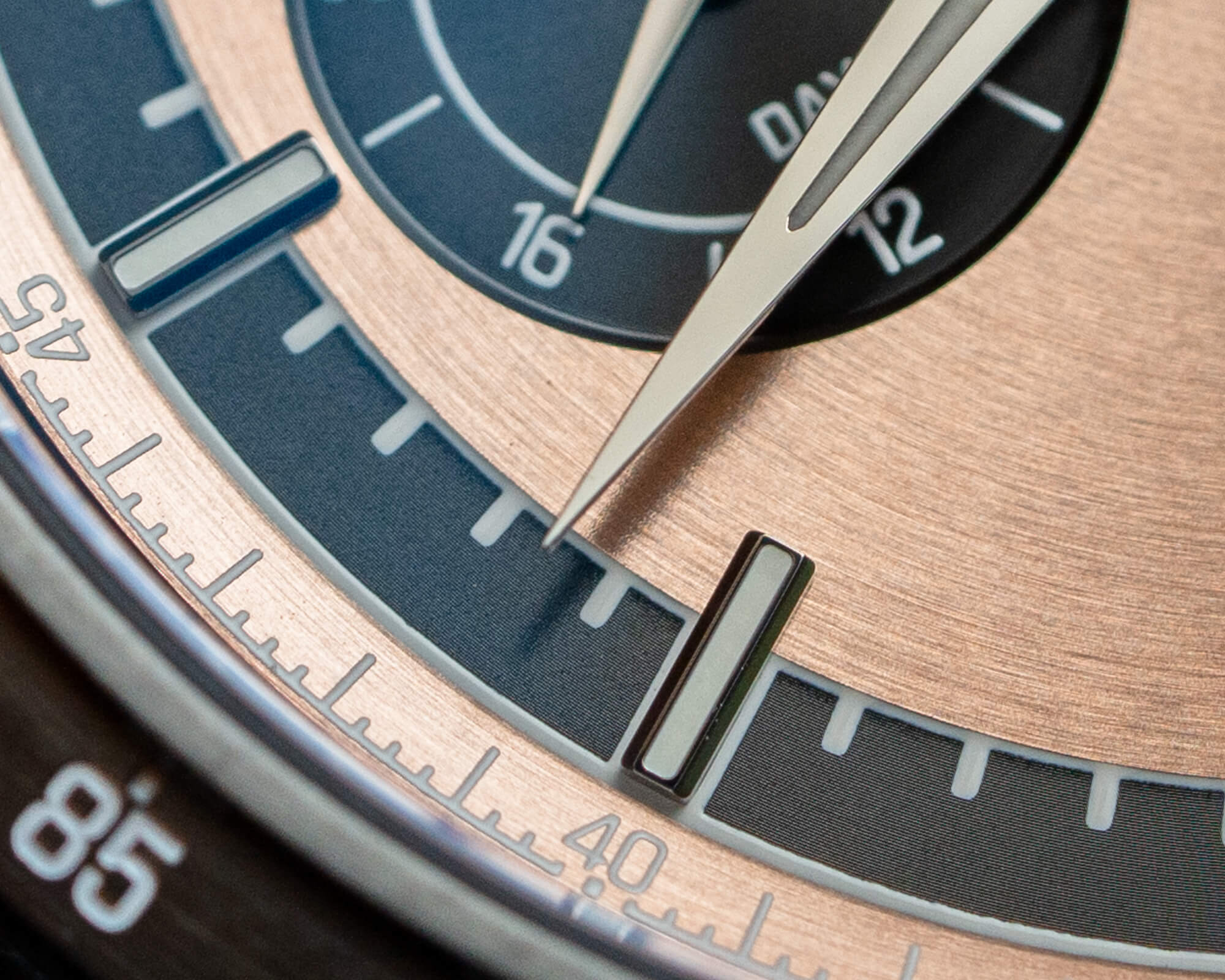
The one downside to centrally mounting your chronograph display is that you’ve got to balance out your small running seconds with something. Here, we’re left with the unfortunate choice of a 24-hour hand. Aside from tracking time of day in a bunker, the only advantage I can see of having this is when setting the watch when it’s stopped. The 24-hour register will allow you to tell whether the watch stopped in AM or PM and could save you a bit of trouble. Despite my lack of enthusiasm for the 24-hour subdial as an idea, much less a practice, it does provide balance here, and it doesn’t draw the eye in a way that detracts from enjoying the timepiece. Like so many things in the world of watches, it’s something that is nitpicked to death in reviews, comment sections, and forums, but it’s hardly noticed on the wrist.
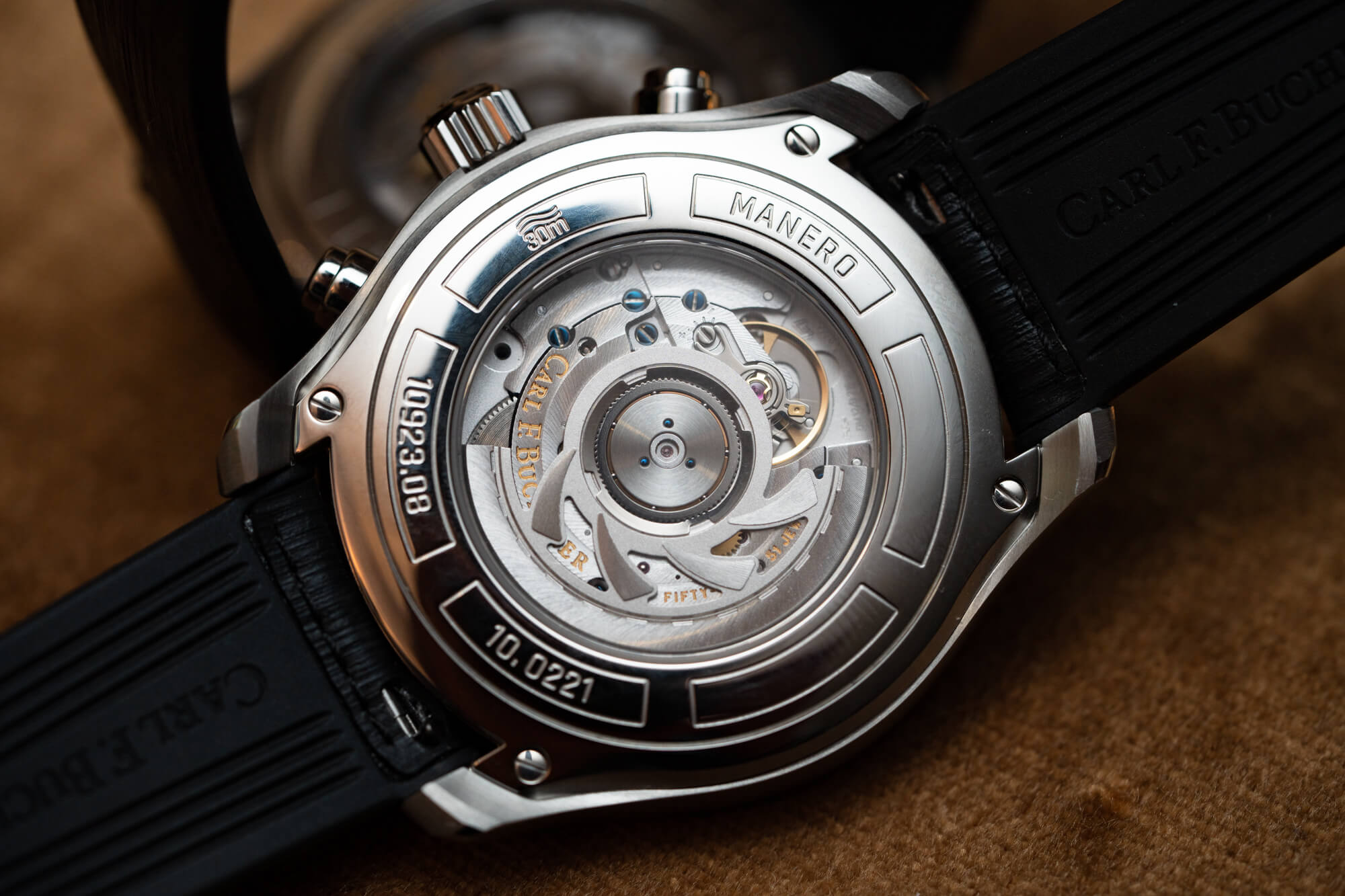
The Carl F. Bucherer Manero Central Counter Chronograph runs on the automatic CFB 1967 movement. Quoted as a 47-jewel movement with a 44-hour power reserve at 28,800 vph, it’s on full display through a sapphire caseback crystal. The decoration isn’t wildly impressive, but at its sub-$10k price point, I’m not expecting anything too artful. The CFB 1967 is based on the Swiss Sellita SW300, fitted with a Dubois Depraz Chrono-Modul 2079 to provide its functionality. Given the modular design, I’m surprised the watch isn’t actually thicker. Ultimately, what the use of a Sellita base and a DD module means is ease of serviceability. If the module breaks, you can swap it out; if the movement breaks, it’s easy to repair.
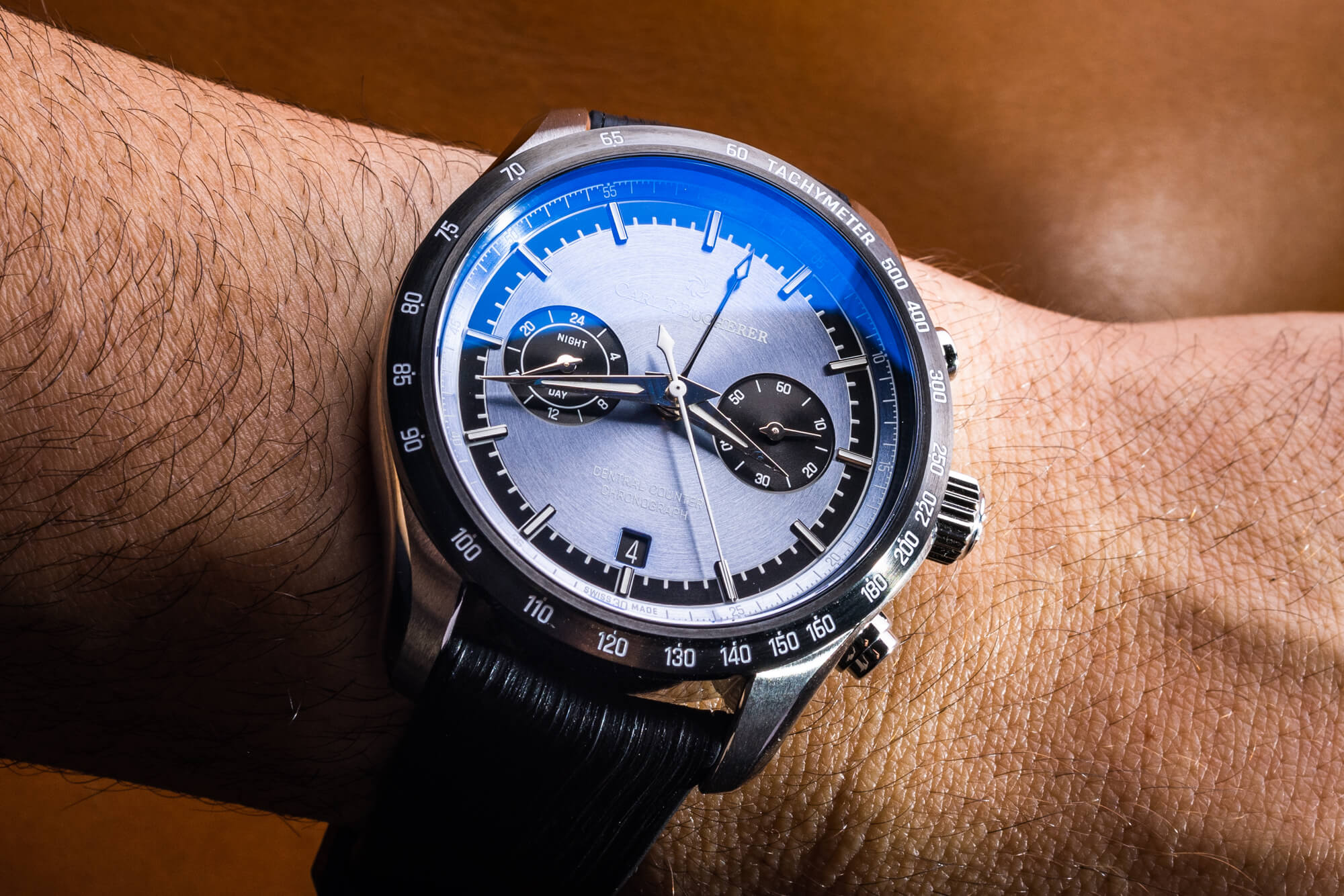
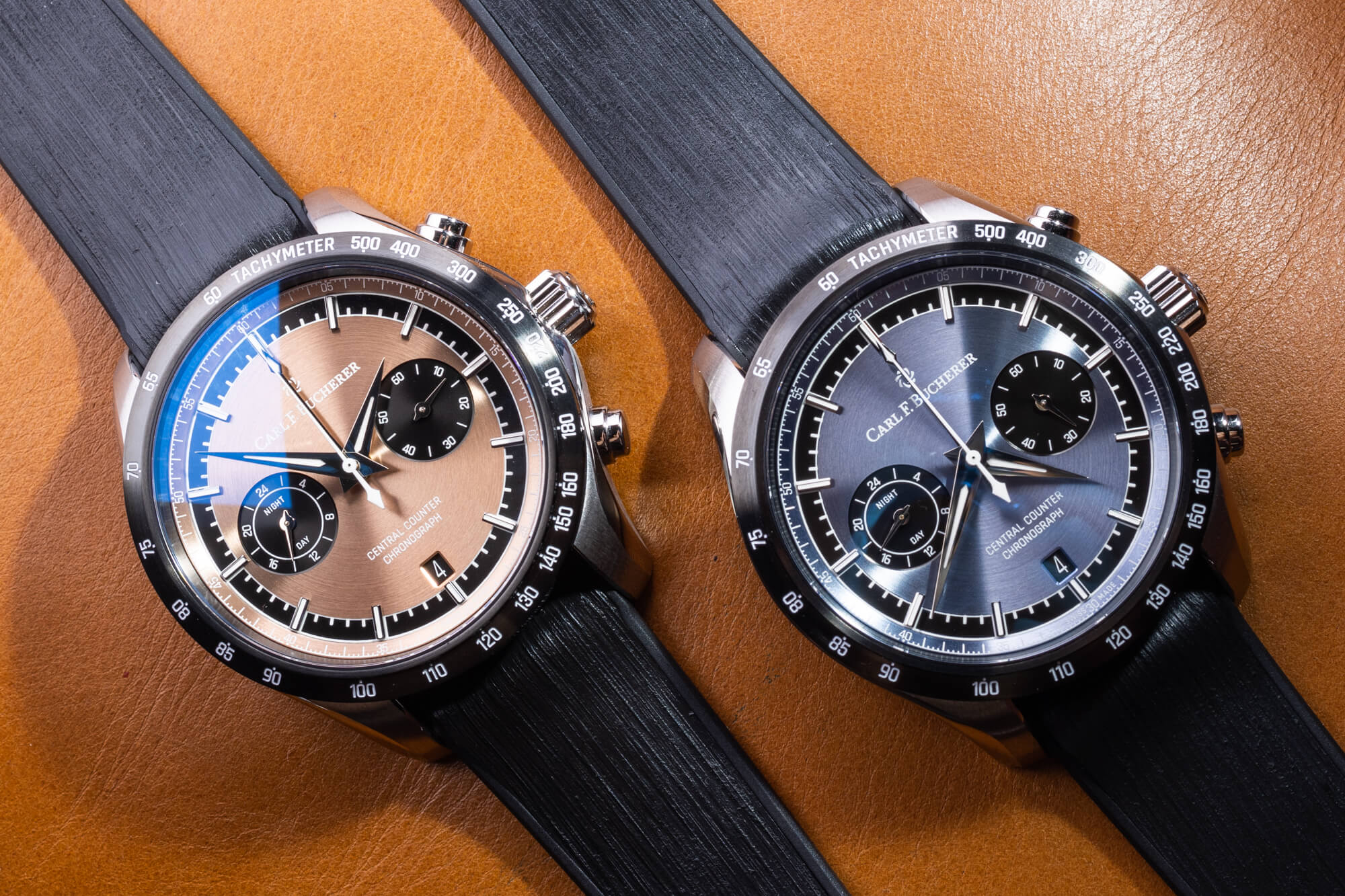
There’s certainly a trend going around with black-bezel, steel-case chronographs, isn’t there? I don’t think that’s a bad thing, because they look uniformly fantastic. The Manero Central Counter Chronograph is no exception, and I think the brand has managed a smartly designed watch that doesn’t call to mind any of the other watches in the trend. With an array of earthy colors, heaps of texture, and novel functionality, this one is something a bit different. The Carl F. Bucherer Manero Central Counter Chronograph watches are priced at $8,400 USD, including a black and red limited edition restricted to 99 pieces. For more information, please visit the brand’s website.

